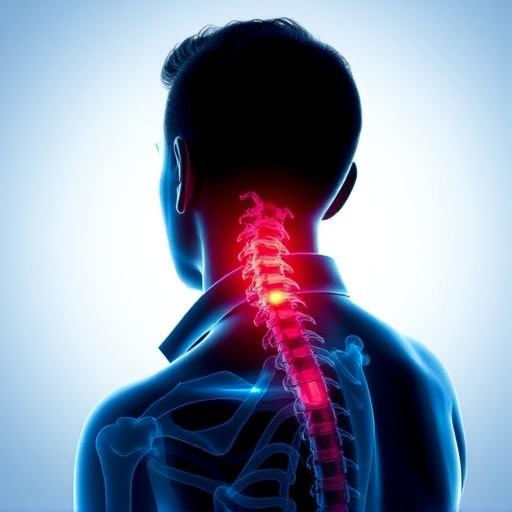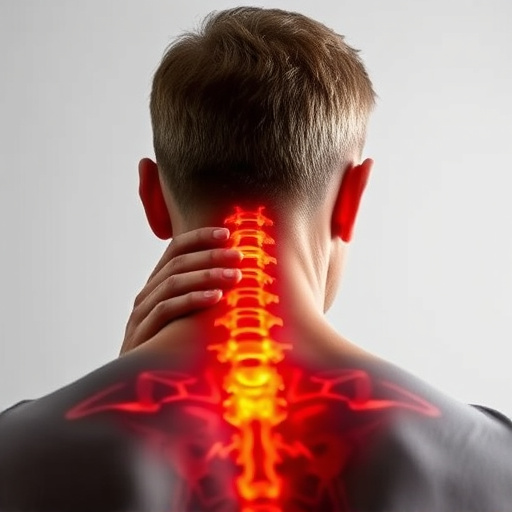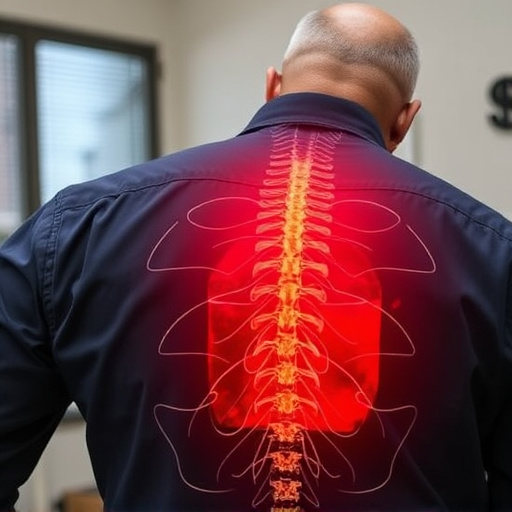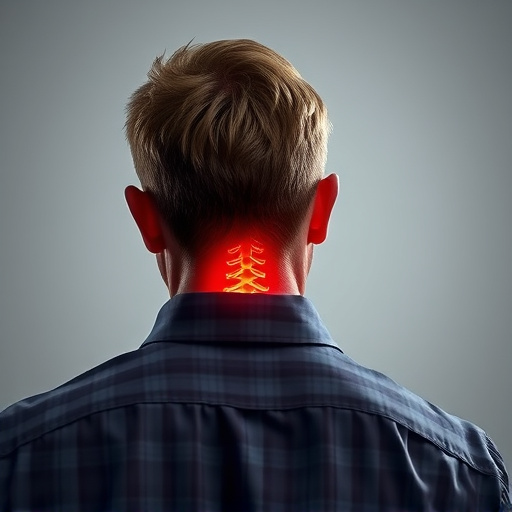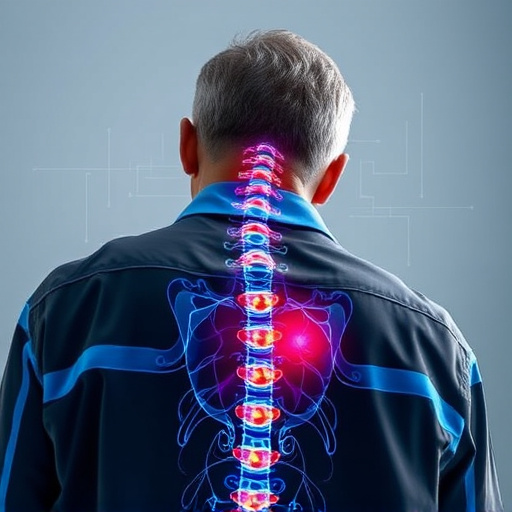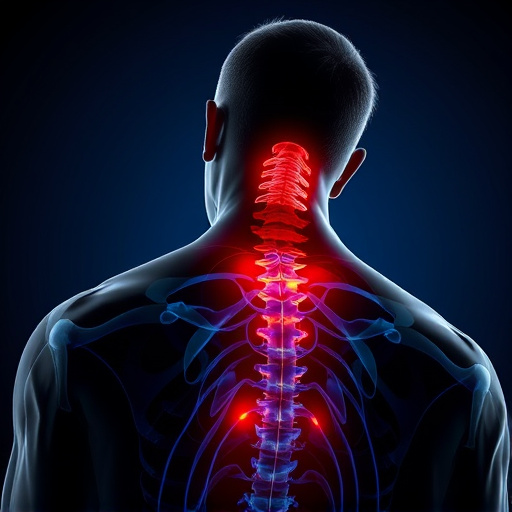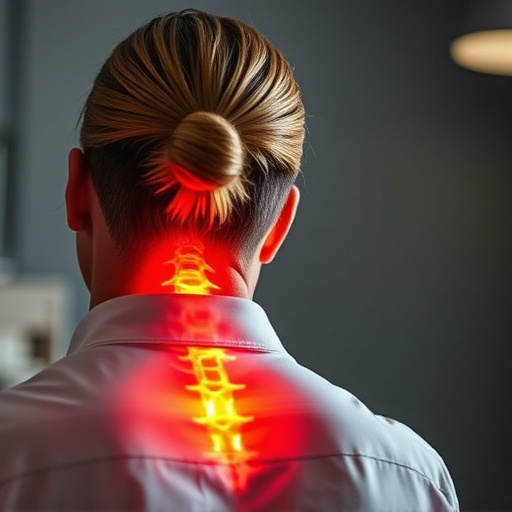Workplace neck and back pain is a prevalent issue that requires proactive, comprehensive care. By addressing root causes like poor ergonomics, repetitive motions, and accidents, employers can prevent and alleviate employee discomfort. This involves implementing ergonomic solutions, such as adjustable workstations and proper lifting techniques. Effective treatment includes thorough assessments, accurate diagnoses (e.g., X-rays, MRI), and tailored strategies like physical therapy, medication, and ergonomic adjustments. Comprehensive care also encompasses physical and occupational therapy, as well as integrative treatments to reduce stress and improve posture. Ergonomic optimization of work environments significantly reduces risks and provides immediate relief from conditions like repetitive strain injuries. Rehabilitation and return-to-work programs ensure a gradual, safe transition, while supportive workplace cultures promote employee well-being through wellness initiatives, open communication, and access to assistance programs, ultimately facilitating effective neck and back pain relief.
Workplace-related injuries, particularly chronic neck and back pain, pose significant challenges. This comprehensive guide delves into effective strategies for managing such ailments. From understanding the root causes of neck and back pain through assessment and diagnosis to exploring diverse treatment options, including ergonomic solutions, we provide a holistic approach. Additionally, this article emphasizes rehabilitation techniques and return-to-work strategies, while advocating for a supportive workplace environment as a key component in achieving lasting neck and back pain relief.
- Understanding Workplace-Related Injuries: Neck and Back Pain
- Assessment and Diagnosis for Effective Care
- Comprehensive Treatment Approaches
- Role of Ergonomics in Injury Prevention
- Rehabilitation and Return to Work Strategies
- Creating a Supportive Workplace Environment
Understanding Workplace-Related Injuries: Neck and Back Pain
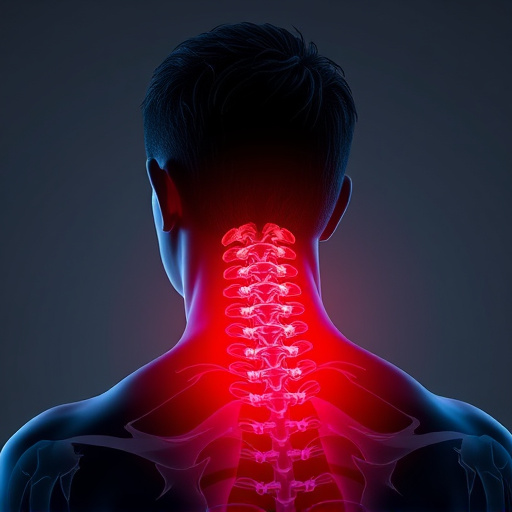
Workplace-related injuries, particularly neck and back pain, are a prevalent concern that often goes unnoticed until it becomes a persistent issue. These injuries can result from various factors such as poor ergonomics, repetitive motions, or sudden accidents during work tasks. Neck and back pain relief is not just about treating symptoms; it’s an essential part of comprehensive workplace care, focusing on prevention and early intervention to ensure long-term health.
Understanding the root causes of these injuries is crucial. Many jobs require prolonged periods of sitting or standing, which can lead to muscle strain and discomfort over time. Additionally, heavy lifting or awkward positioning can cause acute injuries. Implementing ergonomic solutions, such as adjustable workstations and proper lifting techniques, can significantly reduce the risk and provide immediate relief for employees experiencing neck and back pain.
Assessment and Diagnosis for Effective Care
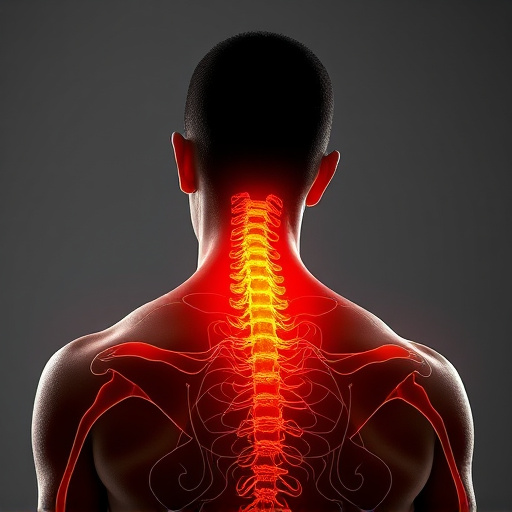
Effective care for workplace-related injuries begins with a thorough assessment and accurate diagnosis. The first step is to evaluate the extent of the injury, focusing on common issues like neck and back pain relief. Healthcare professionals use a combination of patient history, physical examinations, and diagnostic tools such as X-rays or MRI scans to identify the root cause. This comprehensive approach ensures that treatment strategies target specific needs, promoting faster recovery and reducing long-term complications.
A precise diagnosis is crucial for tailoring interventions aimed at neck and back pain relief. Treatment plans may include physical therapy, medication, ergonomic adjustments in the workplace, or a combination of these methods. By addressing the underlying factors contributing to the injury, this holistic method facilitates not only immediate pain management but also prevents future recurrence.
Comprehensive Treatment Approaches
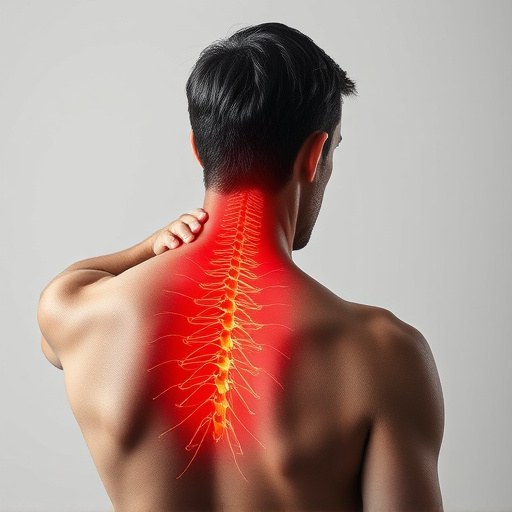
In addressing workplace-related injuries, comprehensive treatment approaches are essential for achieving lasting neck and back pain relief. These strategies go beyond mere symptom management by targeting the root causes of discomfort. Physical therapists play a pivotal role in this process, employing specialized techniques such as manual therapy, exercise programs, and ergonomic assessments to restore mobility and strengthen supporting muscles. Additionally, occupational therapists contribute by modifying work environments and providing guidance on improved workplace practices to prevent future injuries.
Integrative treatments, including chiropractic care, acupuncture, and cognitive-behavioral therapy, offer complementary avenues for neck and back pain relief. These holistic approaches focus on reducing stress, improving posture, and enhancing overall well-being. By combining these diverse methodologies, comprehensive care ensures that individuals not only find immediate relief but also develop long-term strategies to maintain a healthy and productive lifestyle in their professional settings.
Role of Ergonomics in Injury Prevention
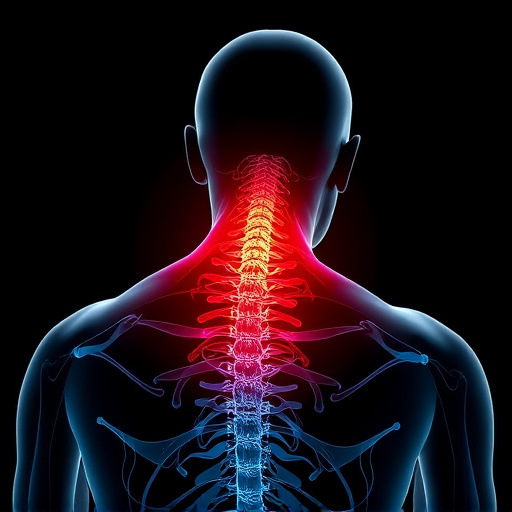
Ergonomics plays a pivotal role in preventing workplace-related injuries, particularly those leading to persistent neck and back pain. By focusing on how individuals interact with their work environment, ergonomics aims to reduce physical strain and promote safer practices. This includes designing workstations that support proper posture, ensuring tools and equipment are easily accessible without excessive reach or lift, and encouraging regular breaks to prevent muscle fatigue.
A well-designed ergonomic workspace can significantly alleviate issues like repetitive strain injuries (RSIs), carpal tunnel syndrome, and the common complaints of neck and back pain relief. It involves adjusting factors such as desk height, chair support, monitor placement, and keyboard angles to fit individual worker needs. Such adjustments not only minimize physical discomfort but also enhance productivity by keeping employees engaged and focused throughout their shifts.
Rehabilitation and Return to Work Strategies
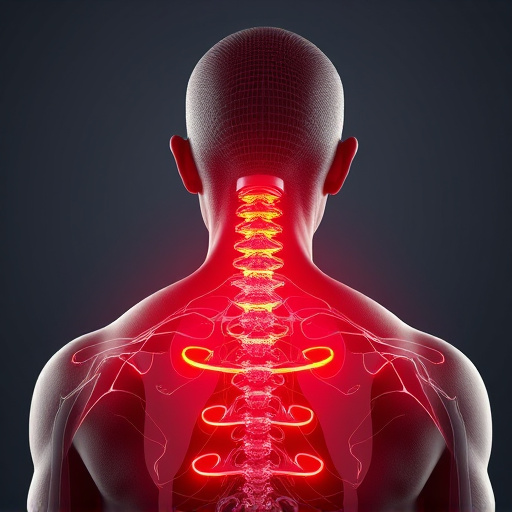
Rehabilitation and return-to-work strategies play a pivotal role in comprehensive care for workplace-related injuries, especially those involving neck and back pain. After an initial period of rest and medical intervention to alleviate symptoms, patients are guided through a structured program focusing on gradual improvement and eventual reintegration into the workforce. Physical therapy, tailored exercises, and ergonomic adjustments at the workplace are key components of this process, aiming to restore mobility, strengthen muscles, and prevent further discomfort or relapse.
Effective strategies involve collaboration between healthcare professionals, employers, and employees. This includes developing customized plans that consider individual limitations and capabilities while ensuring a safe and supportive work environment. By implementing these measures, organizations can foster a culture of care, enhance employee well-being, and ultimately promote a smoother transition back to work for those recovering from workplace injuries, particularly those related to neck and back pain relief.
Creating a Supportive Workplace Environment
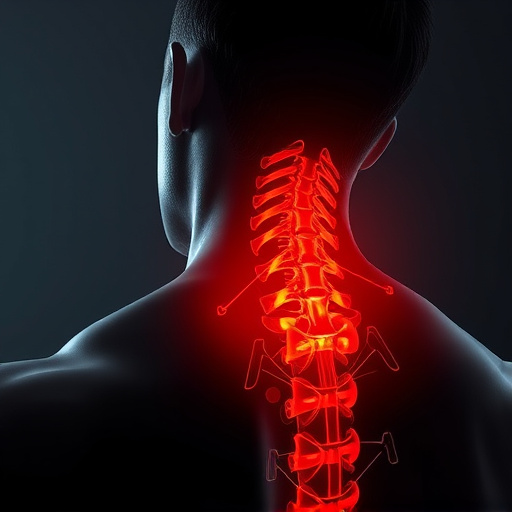
Creating a supportive workplace environment is a key component in comprehensive care for workplace-related injuries, especially those involving chronic conditions like neck and back pain. Beyond providing necessary medical treatment, organizations should focus on fostering an atmosphere that encourages employee well-being and recovery. This includes implementing ergonomic design principles to reduce physical strain and offering regular health and wellness programs aimed at preventing and managing pain.
Additionally, promoting open communication between employees and management is essential. Supportive leadership can recognize early signs of discomfort or distress, promptly addressing issues before they escalate. Employee assistance programs (EAPs) that offer counseling and other support services can also play a crucial role in helping individuals cope with work-related stress and its physical manifestations, such as neck and back pain relief.








